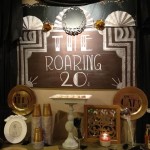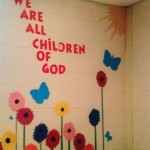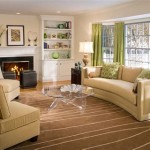Kids Bedroom Decor Ideas: Creating Engaging and Functional Spaces
Designing a child's bedroom is a multifaceted undertaking. It involves creating a space that is not only visually stimulating and appealing to a young mind, but also functional, safe, and adaptable to their evolving needs. The ideal kid's bedroom should foster creativity, provide a comfortable environment for rest and play, and promote organization and independence. This article explores a range of decor ideas to help achieve these goals, covering aspects from color palettes and furniture selection to storage solutions and personalized touches.
Color Psychology and Palettes for Kid's Bedrooms
Color profoundly impacts mood and behavior, making it a critical consideration in bedroom design. While personal preferences should be considered, understanding the psychological effects of various colors can help create a more conducive environment for a child. Bright, vibrant colors, such as yellows and oranges, can stimulate energy and creativity, but excessive use may lead to overstimulation or restlessness. Conversely, cooler colors, like blues and greens, tend to promote calmness and relaxation, which can be beneficial for sleep.
A balanced approach is often the most effective. Consider using a neutral base color, such as white, gray, or beige, for the walls and then incorporating accent colors through bedding, artwork, and accessories. This allows for easy updates as the child grows and their preferences change. For younger children, pastel shades can create a soft and welcoming atmosphere. As they get older, they may express a desire for bolder, more personalized color schemes, which can be accommodated through wall paint, decals, or removable wallpaper.
Another important aspect of color selection is considering the room's natural light. A room with limited natural light may benefit from warmer, brighter colors to create a sense of warmth and openness. A room with ample natural light can handle cooler, darker tones without feeling oppressive. Test paint samples in the room under different lighting conditions to ensure the desired effect is achieved.
Furniture Selection and Layout Considerations
Furniture is another key element in creating a functional and appealing kid's bedroom. Prioritize furniture that is appropriately sized for the child and designed with safety features. Avoid furniture with sharp edges or unstable constructions. Consider furniture that can grow with the child, such as beds that can be extended or desks that can be adjusted in height.
The bed is typically the focal point of the room. Bunk beds or loft beds can be excellent space-saving solutions, especially in smaller bedrooms, but require careful consideration of safety precautions, such as sturdy ladders and guardrails. Consider a daybed that can function as a couch during the day. The choice of mattress is also important for comfort and support. Consider hypoallergenic and easily washable options.
Storage is essential in a kid's bedroom. Choose wardrobes, dressers, and shelving units that provide ample space for clothing, toys, and other belongings. Consider incorporating built-in storage solutions to maximize space and minimize clutter. Ensure that storage units are easily accessible to the child, so they can participate in tidying up and maintaining organization. Low shelves or toy chests that are within reach allow children to learn organizational skills at an early age.
The layout of the furniture should promote functionality and flow. Create distinct zones for sleeping, playing, and studying. Positioning the desk near a window can provide natural light and a stimulating view, while the play area should be open and spacious. Avoid overcrowding the room with too much furniture, as this can create a sense of claustrophobia and restrict movement. Consider using rugs to define different zones and add warmth and texture to the room.
Creating Personalized and Themed Spaces
Personalization is what transforms a kid's bedroom from a generic space into a unique and cherished environment. Involving the child in the decorating process, within reasonable limits, can foster a sense of ownership and pride in their room. This can involve choosing artwork, selecting bedding, or deciding on a theme that reflects their interests.
Themes can be a fun and engaging way to decorate a kid's bedroom. Themes can range from popular characters and movies to hobbies and interests, such as sports, animals, or space exploration. When choosing a theme, consider the child's age and maturity level, as well as the potential for the theme to become outdated as their interests evolve. Avoid themes that are too heavily reliant on licensed characters, as these can be more expensive and less adaptable. Instead, focus on creating a broader theme using colors, patterns, and accessories. For example, a "space exploration" theme could incorporate stars, planets, and rocket ships without relying on specific character licensing. Removable wall stickers and decals can be used to add themed elements without permanently altering the walls.
Artwork is a powerful tool for personalization. Displaying children's own artwork can boost their confidence and self-esteem. Consider creating a gallery wall showcasing their creations, or framing their favorite pieces. Alternatively, choose artwork that complements the room's color scheme and theme. Consider incorporating educational posters or maps to stimulate learning. Wall art should be easy to install and remove, allowing for frequent updates.
Bedding is another opportunity for personalization. Choose bedding that reflects the child's personality and interests. Consider incorporating patterns, textures, and colors that coordinate with the room's overall design. Allow the child to choose their own duvet cover or pillow shams to express their individual style. Decorative pillows can add comfort and visual interest to the bed without making significant changes. The use of fabrics and textures, like a soft throw blanket, add depth to the room.
Lighting and Window Treatments for Ambiance and Functionality
Lighting is a critical aspect of bedroom design that often receives insufficient attention. A well-lit bedroom should provide ample light for various activities, such as reading, playing, and studying, while also creating a relaxing and calming ambiance for sleep. Consider a combination of natural light, overhead lighting, task lighting, and ambient lighting to achieve optimal results.
Maximize natural light by keeping windows clean and unobstructed. Choose window treatments that allow for ample sunlight during the day while providing sufficient privacy and light control at night. Blinds or shades can be used to regulate the amount of light entering the room, while curtains can add softness and texture. Consider blackout curtains for younger children who may be sensitive to light during sleep.
Overhead lighting should provide general illumination for the entire room. A ceiling fan with integrated lighting can be a practical and energy-efficient option. Consider recessed lighting to create a clean and modern look. Choose energy-efficient LED bulbs to reduce energy consumption and heat output. Brightness is also an important consideration, especially in a space designed for use with electronics. Excessive brightness can cause eye strain.
Task lighting is essential for reading, studying, and other activities that require focused illumination. A desk lamp with an adjustable arm allows for precise control of the light direction. A bedside lamp can provide a soft and comforting light for reading before bed. Choose lamps with dimmable switches to adjust the brightness according to the child's needs. The wattage of the bulb effects brightness, so this must be considered as well.
Ambient lighting can create a relaxing and calming atmosphere. String lights or fairy lights can add a touch of whimsy and magic to the room. A night light can provide a sense of security for younger children who may be afraid of the dark. Consider using a dimmer switch to adjust the brightness of the ambient lighting to create a soothing environment for sleep. Lamps that are designed to project shapes onto the ceiling can provide a softer ambient light than standard overhead lighting.
Storage Solutions and Organization Strategies
A well-organized bedroom is essential for promoting a sense of calm and control. Clutter can be distracting and overwhelming, particularly for children. Implement effective storage solutions and organization strategies to help children keep their belongings tidy and accessible.
Maximize vertical space by using shelving units, wall-mounted organizers, and over-the-door storage solutions. Shelves can be used to display books, toys, and decorative items, while wall-mounted organizers can hold art supplies, toiletries, and other small items. Over-the-door storage solutions are ideal for shoes, accessories, and other items that tend to accumulate on the floor.
Utilize storage containers, baskets, and bins to organize toys, clothing, and other belongings. Label each container clearly to make it easy for children to find what they need and put things back in their place. Consider using clear containers to allow children to see the contents without having to open them. Foldable storage cubes offer convenient and easily storable options.
Encourage children to participate in tidying up and maintaining organization. Establish a regular cleaning routine and provide them with age-appropriate tasks. Make tidying up fun by turning it into a game or setting a timer. Praise and reward children for their efforts to keep their room clean and organized. Having age-appropriate cleaning tools, like a small broom and dustpan, can foster independence.
Consider incorporating a designated "drop zone" for items that tend to accumulate near the door, such as backpacks, jackets, and shoes. This can be a simple hook or a small bench with storage underneath. By providing a designated place for these items, you can prevent them from being scattered throughout the room. Storage is not limited to closets and shelving, but must be incorporated at all levels, including at ground level. Low-level bins and under-bed storage can free space.
Rotate toys and books to keep the room from feeling cluttered and overwhelming. Store some items in a closet or storage unit and rotate them every few weeks or months. This will keep the room feeling fresh and exciting and prevent children from becoming bored with their toys. A "one in, one out" approach helps to maintain a clutter-free environment. Before introducing new toys or belongings to the room, have the child select an older item to donate or discard.

Kids Room Decorating Ideas That Go From Toddler To Teen

Kids Bedroom Ideas Room Childrens Bedrooms Interior Design Art

10 Decorating Ideas For Kids Rooms How To Decorate A Room

Enchanting Kids Bedroom Ideas Transform Your Child S Room Into A Mag Greyt

The New Era Of Colourful Kids Rooms

Kids Room Decorating Ideas For Your Home Designcafe

Small Kids Room Design Ideas Ashley

50 Clever Kids Bedroom Storage Ideas You Won T Want To Miss

16 Neutral Kids Bedroom Decor Ideas Lady Decluttered

Where The Wild Things Are 6 Kids Bedroom Decor Ideas Homes Interiors Scotland
Related Posts







